In addition, it also featured an all-metal construction with flush-rifted skinning.
Otherwise, the new fighter retained the general appearance of its predecessor.
In addition, the aircraft could carry six 127mm (5-inch) rocket projectiles to attack ground targets.
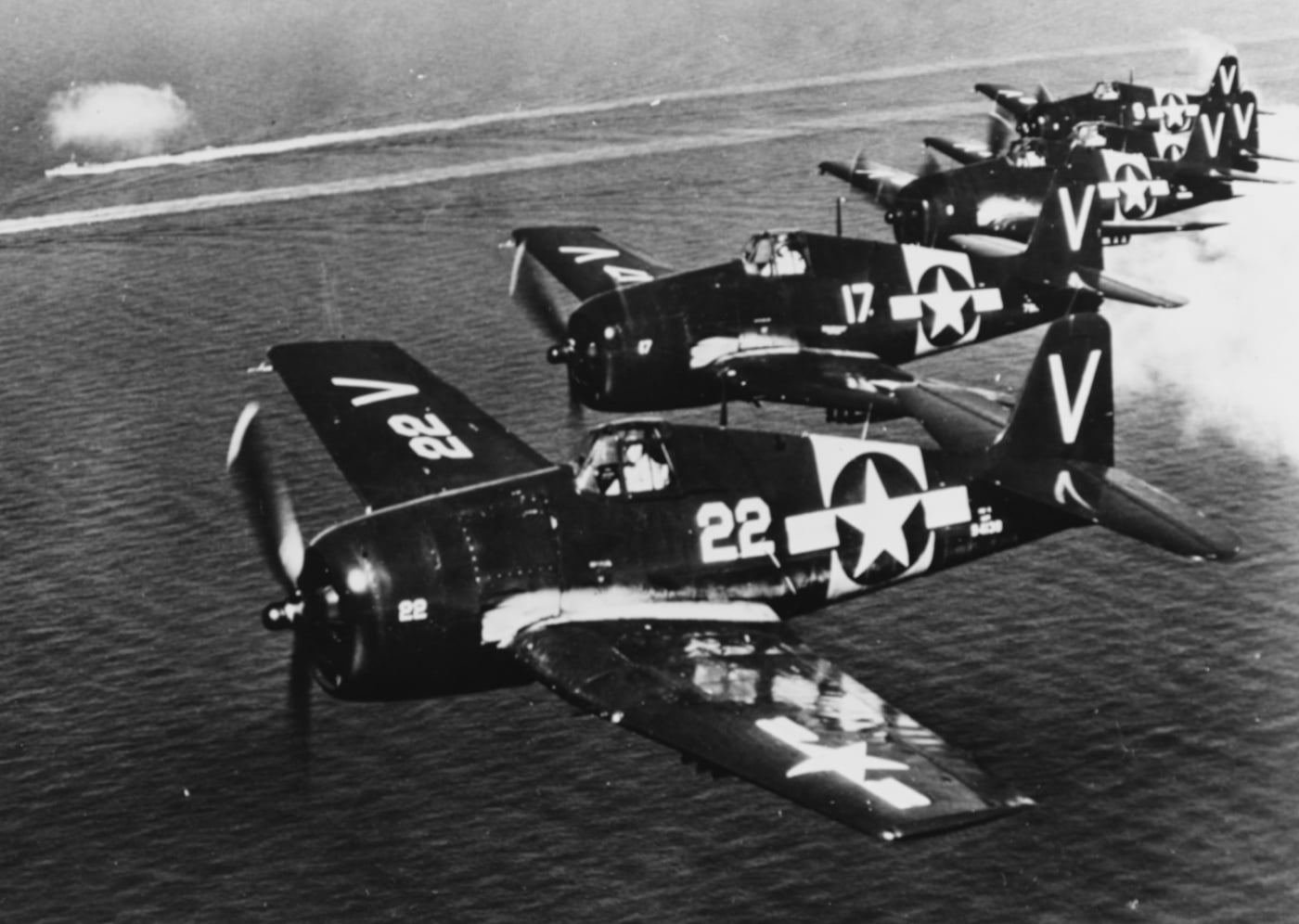
F6F-5 Hellcat fighters flying in formation over the Pacific Ocean during the latter 1940s. Image: NARA
[Dont miss Capt.
Dale A. Dyes article on theBattle of Peleliu.]
In the nearly two-week-long campaign, the U.S.
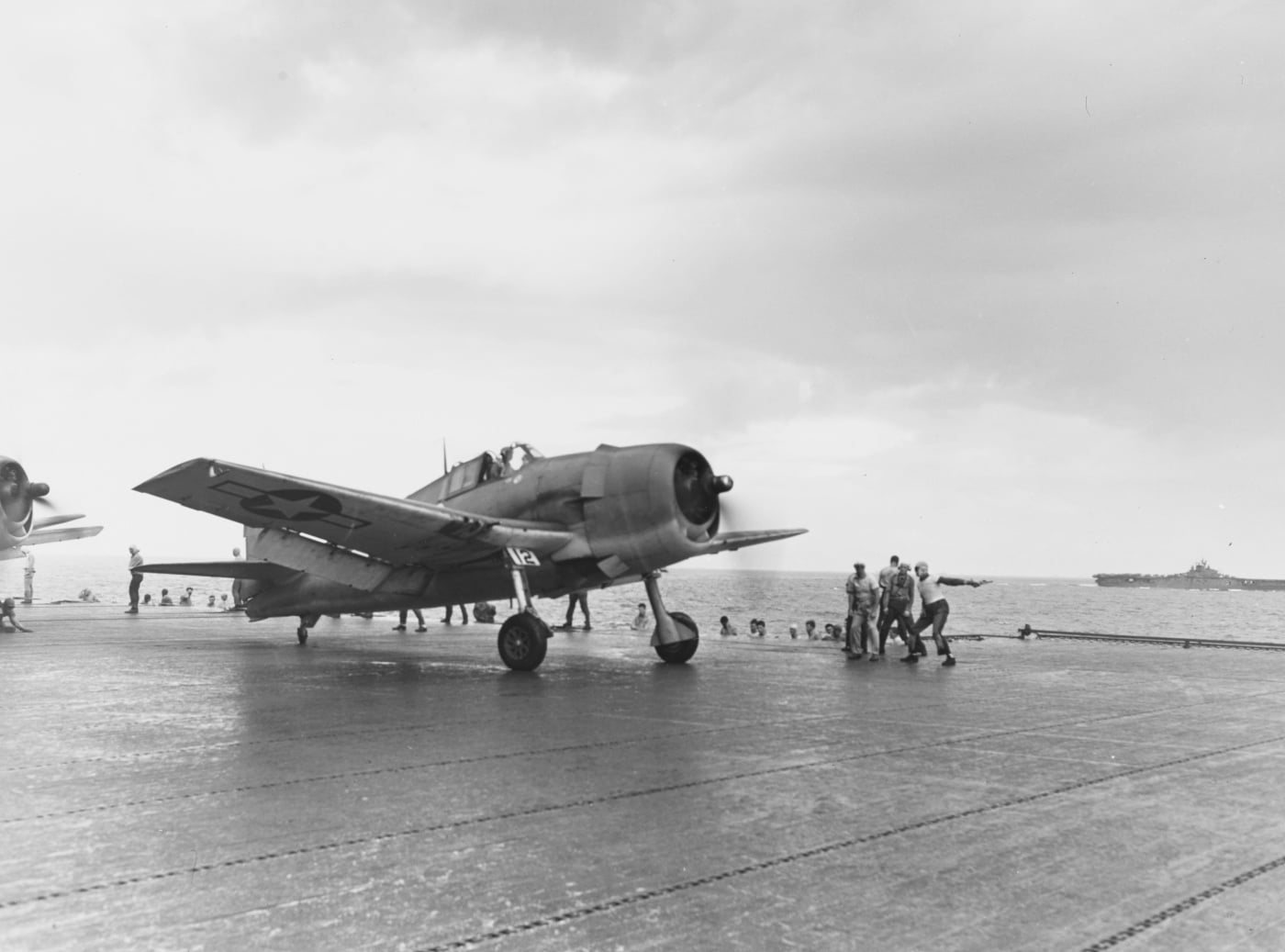
On February 17, 1944, Grumman F6F-3 Hellcat takes off from the USSEssex(CV-9) on the first day of Operation Hailstone against Japanese forces in Chuuk Lagoon (Truk Atoll). Image: U.S. Navy
Typically four Hellcat night-fighters operated within each fighter squadron aboard a carrier.
The night-fighter F6F-5N was also fitted with a radome mounted on the starboard wing.
Total production of the F6F-5N series extended to 7,868 aircraft.
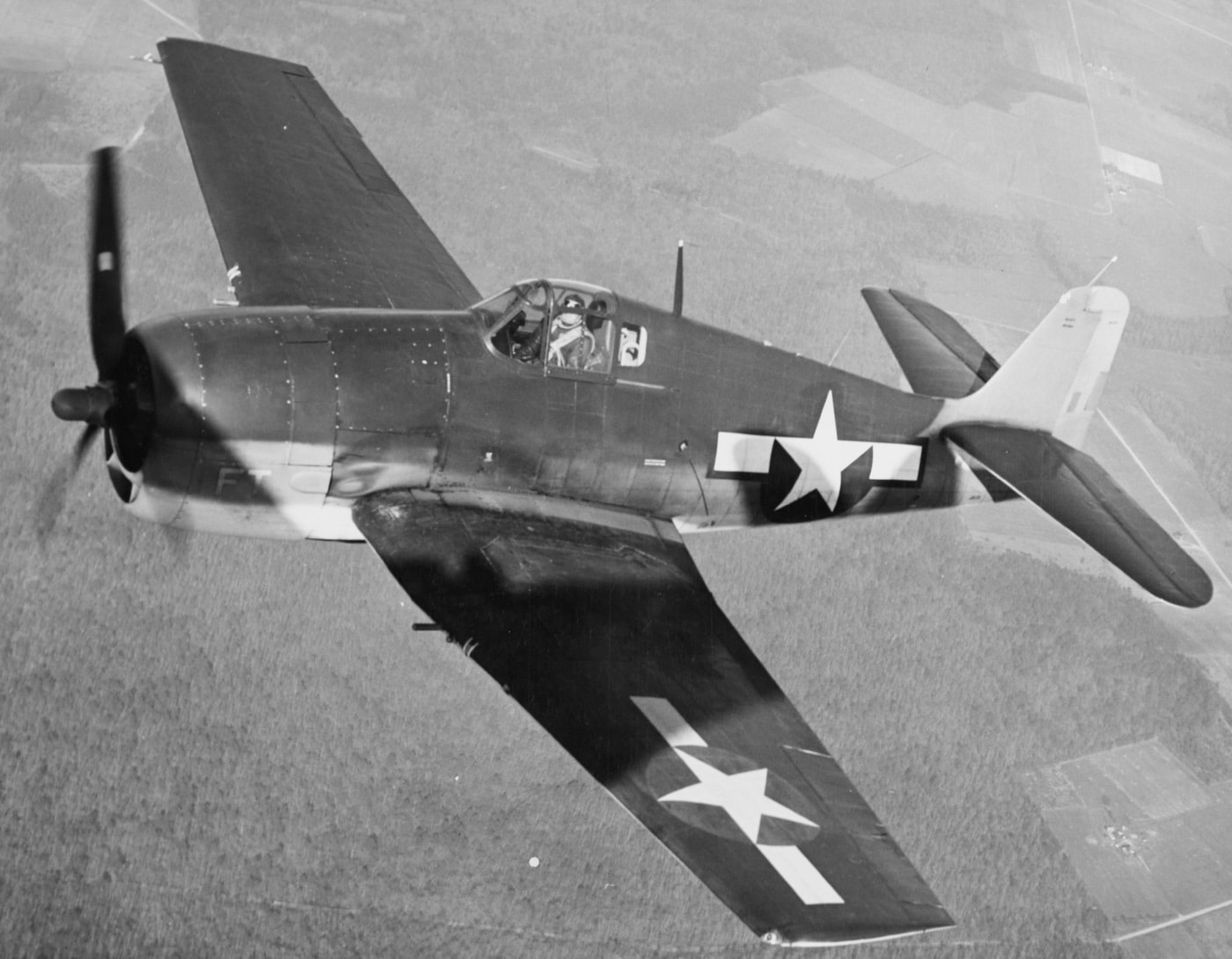
Grumman F6F in flight over NAS Patuxent River, Maryland in February 1944. This is the -3 model of Hellcat. Image: U.S. Navy
In total, 12,725 Hellcats were manufactured by Grumman between June 1942 and November 1945.
Foreign Operators
The United States Navy and Marine Corps were not the only operators of the Hellcat.
The British Fleet Air Arm also operated the fighter taking 252 F6F-3s as the Grumman Gannet Mark I.
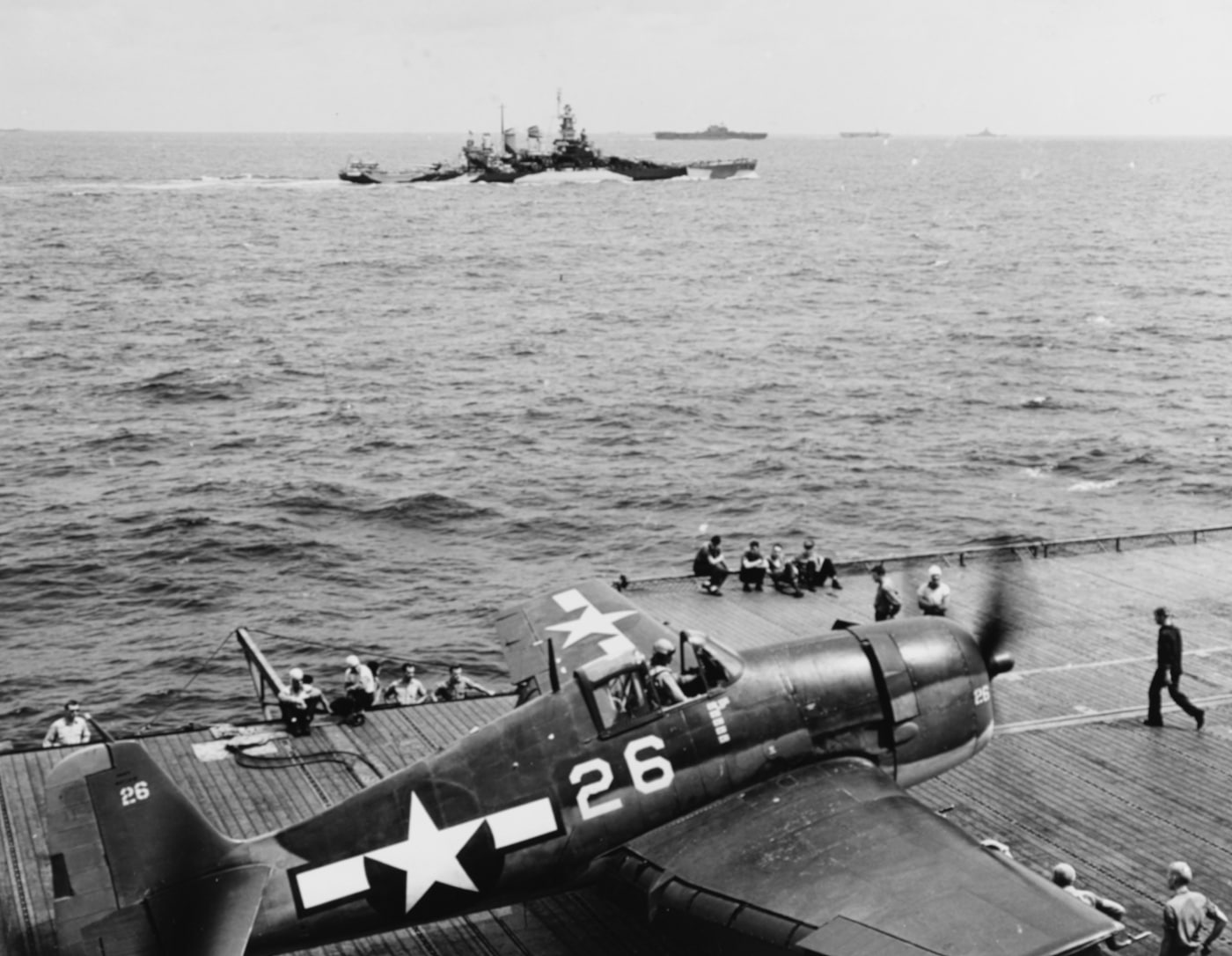
An F6F Hellcat fighter is ready for launch aboard USSLexington(CV-16) during Marianas air strikes in June 1944. USSNorth Carolina(BB-55) and other ships are in the distance. Image: U.S. Navy
The last of the Hellcats remained in service until the early 1960s.
As of 2023, half a dozen more are being restored to airworthiness.
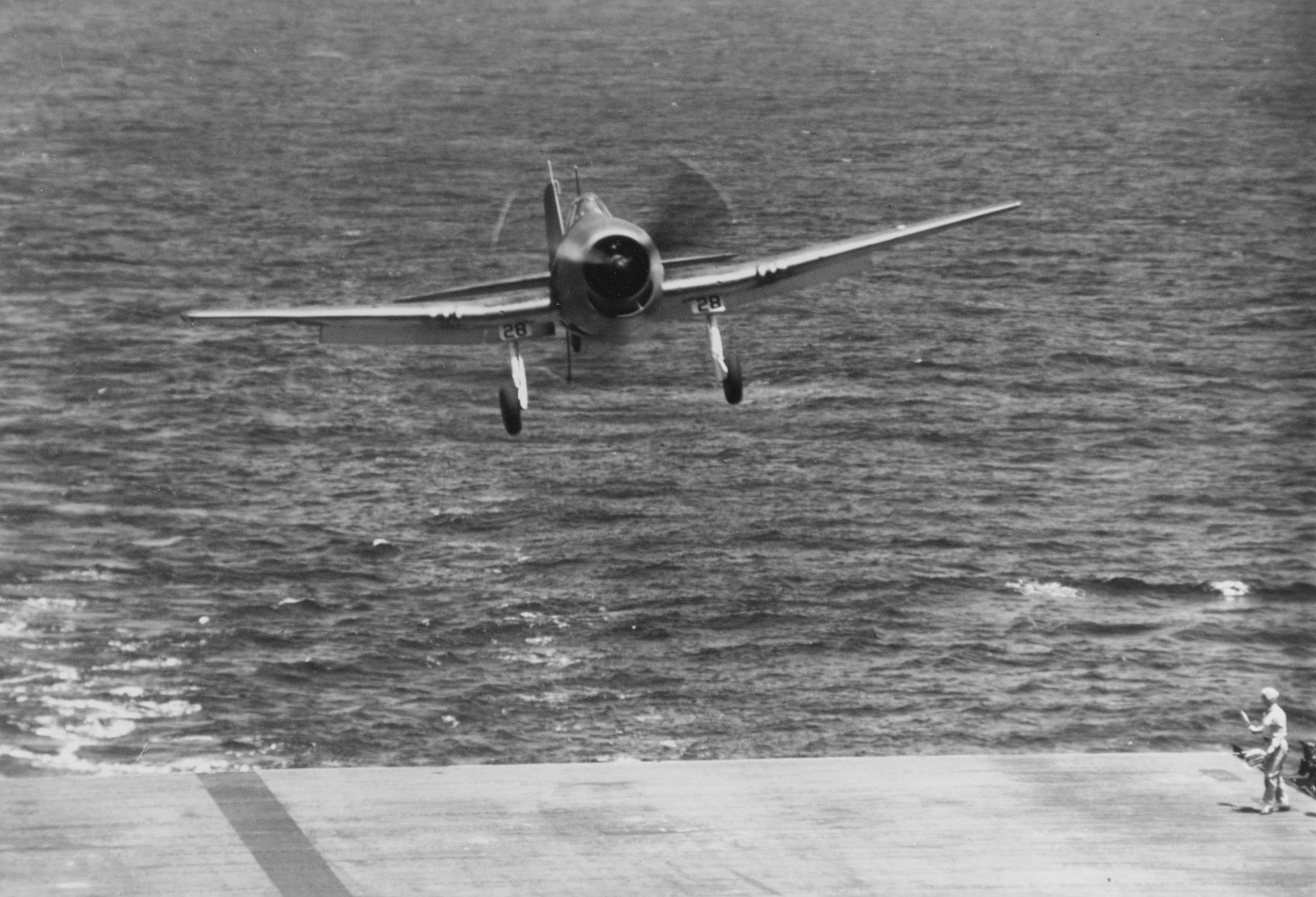
A Grumman F6F-3 Hellcat lands on the deck of the USSYorktown(CV-10) in mid-1943. Image: Lt. Charles Kerlee/U.S. Navy

A Grumman F6F-3 Hellcat fighter of VF-9 from the USSEssex(CV-9) in flight during February 1944. Three victory flags are visible beneath the cockpit. Image: U.S. Navy
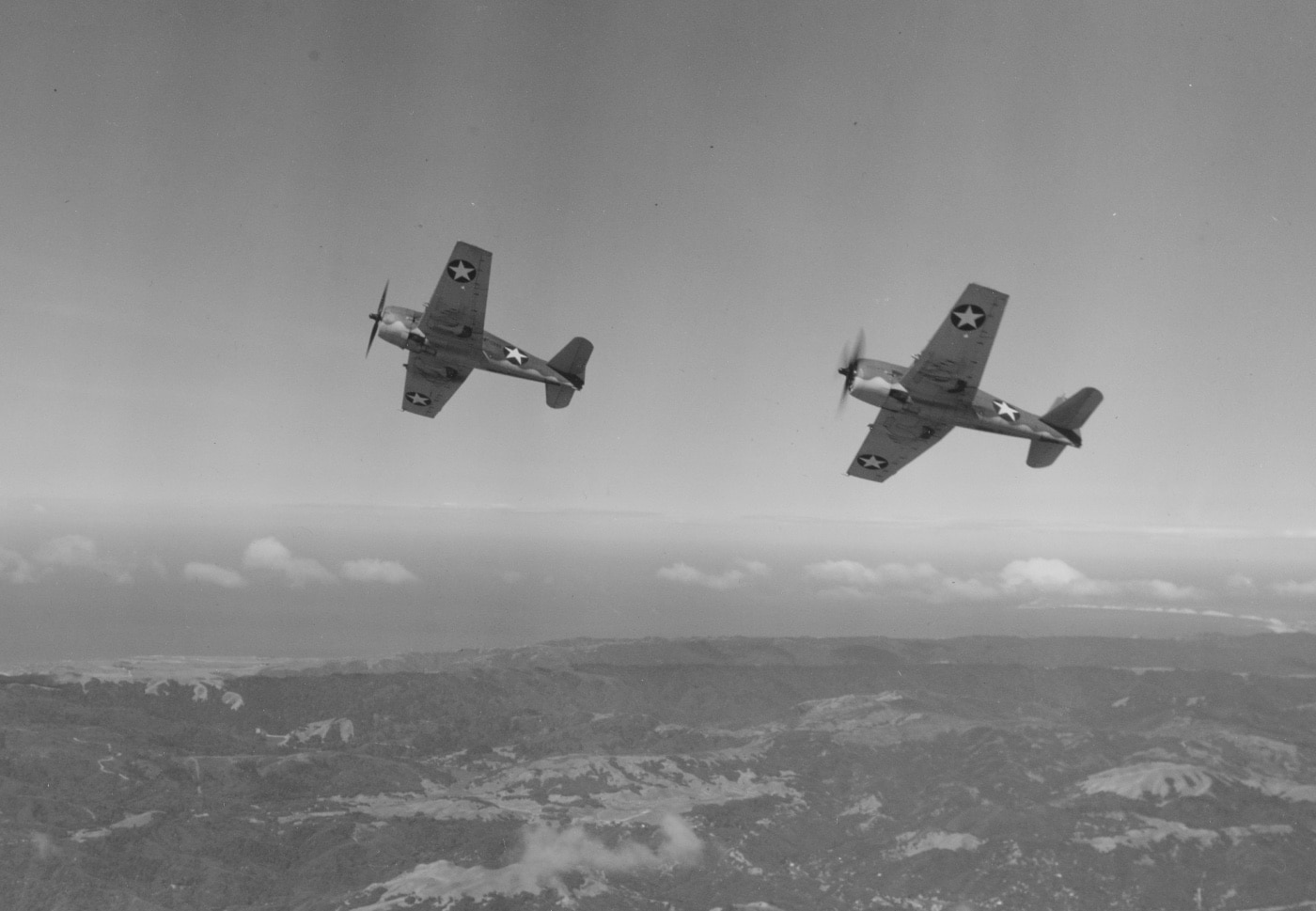
Grumman F6F-3 Hellcat fighters in flight over California in early 1943. Image: U.S. Navy
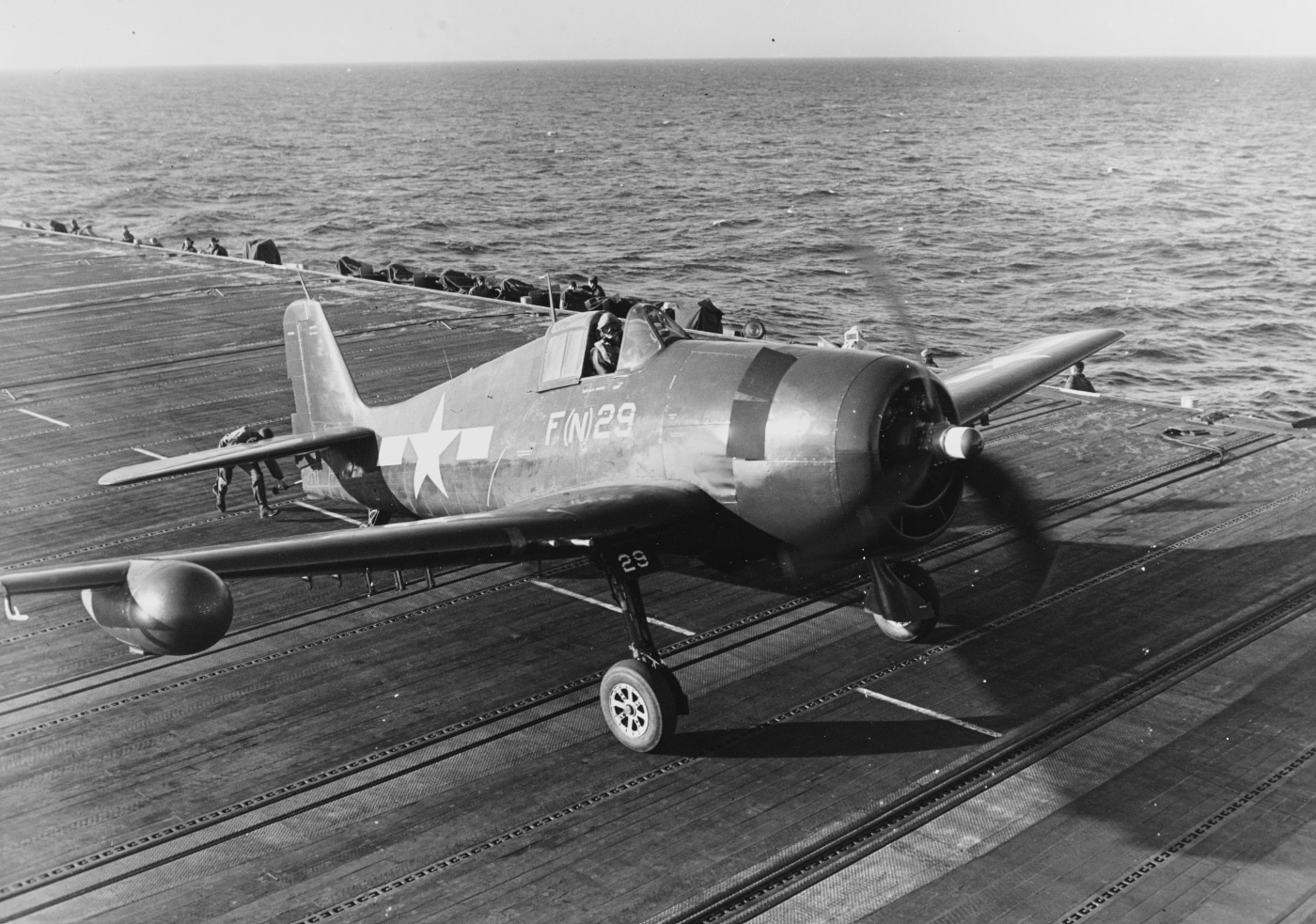
Grumman F6F-5(N) Hellcat night fighter of VMF-511 on the USSBlock Island(CVE-106) in 1945. The plane’s radome is visible on the wing. Image: Pfc. E. Powers/USMC
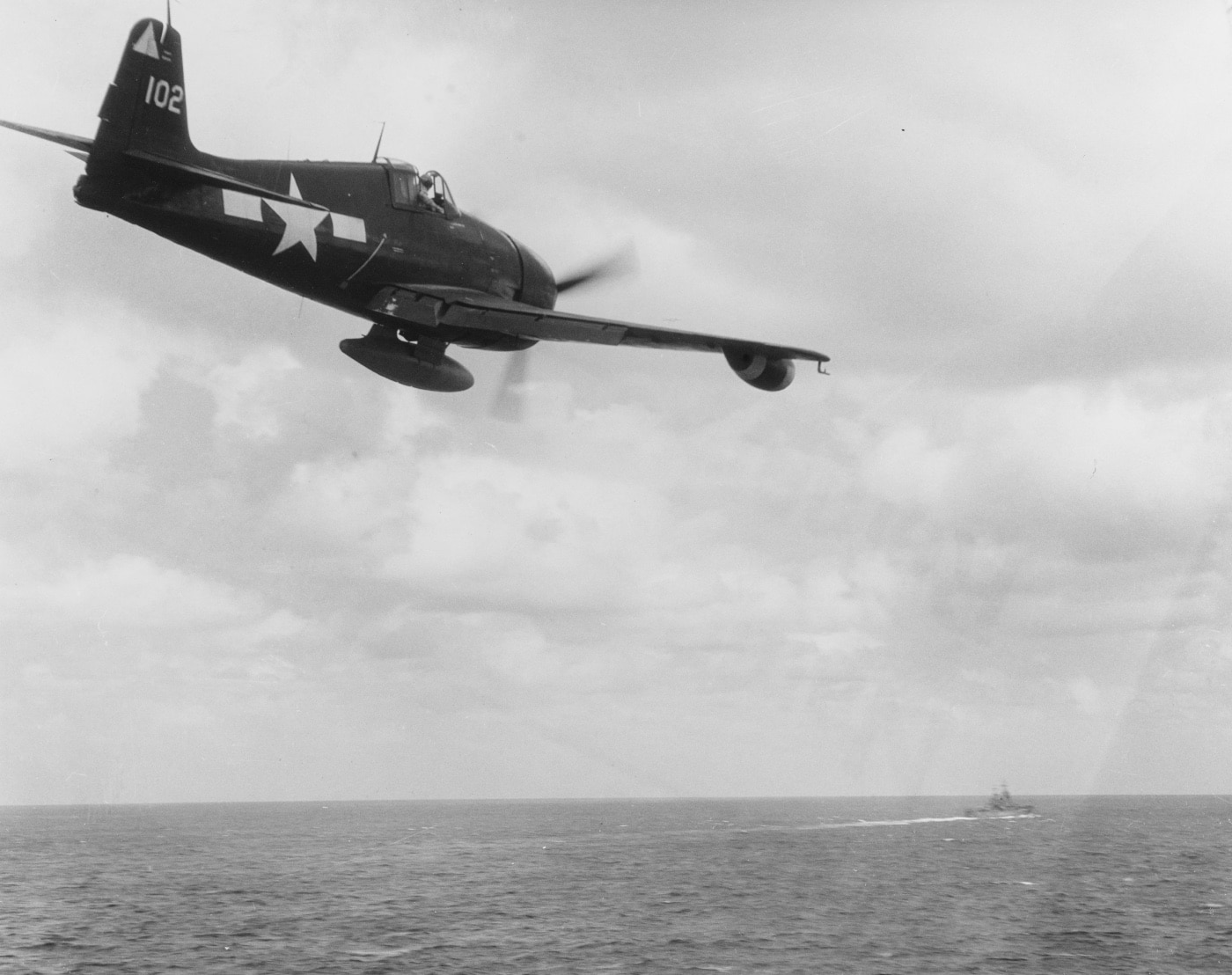
An F6F Hellcat night fighter flies past USSHornet(CV-12) as its pilot drops a message during strikes on Formosa (modern-day Taiwan) in October 1944. Image: U.S. Navy

In 1943, sailors hoist a Grumman F6F-3 Hellcat fighter on board an aircraft carrier in San Diego, California. Image: U.S. Navy
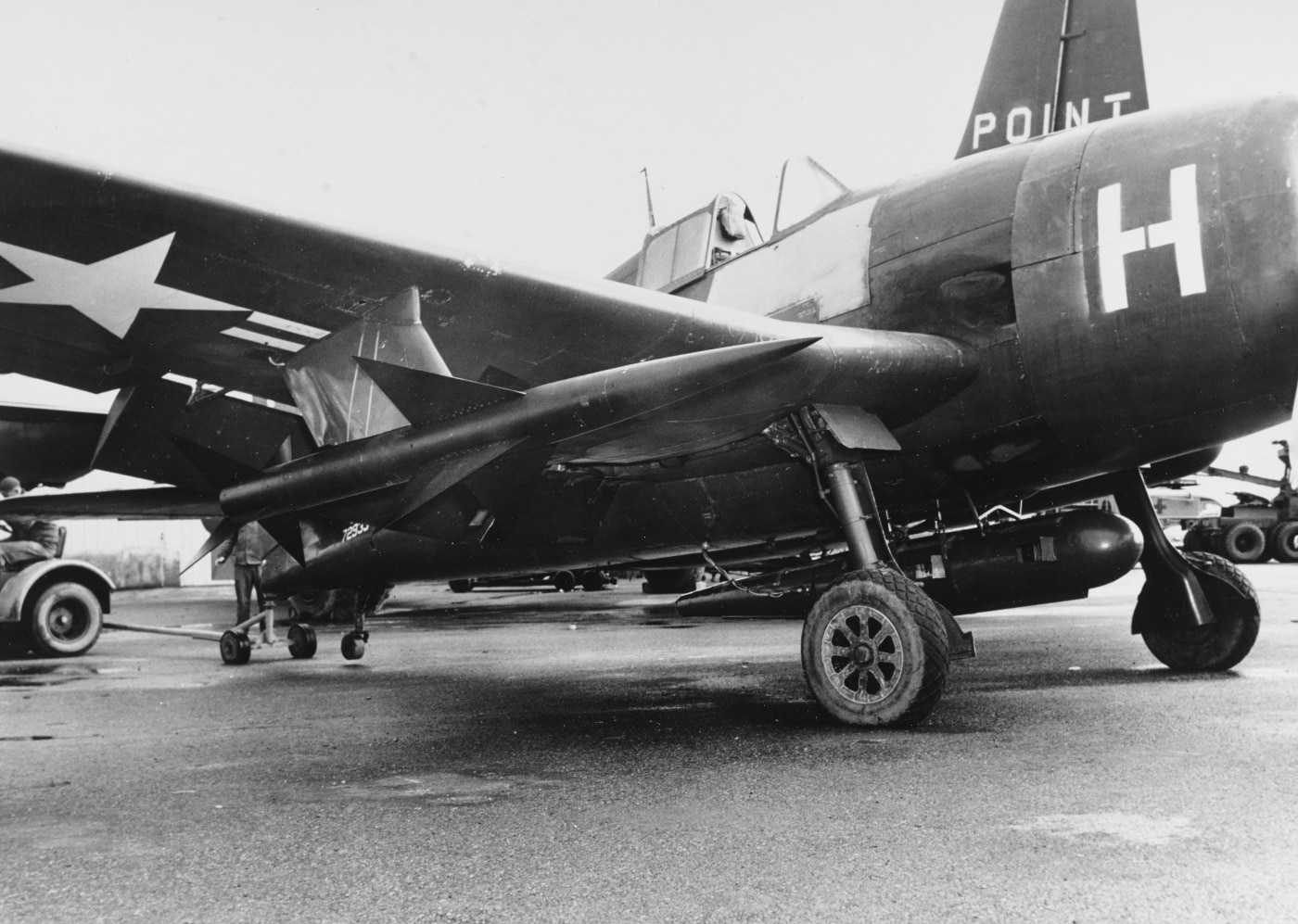
An experimental XAAM-N-2 “Sparrow” missile on the wing launcher of a Grumman F6F-5 Hellcat aircraft in January 1950. The radar instrumentation pod is visible beneath the fighter. Image: U.S. Navy
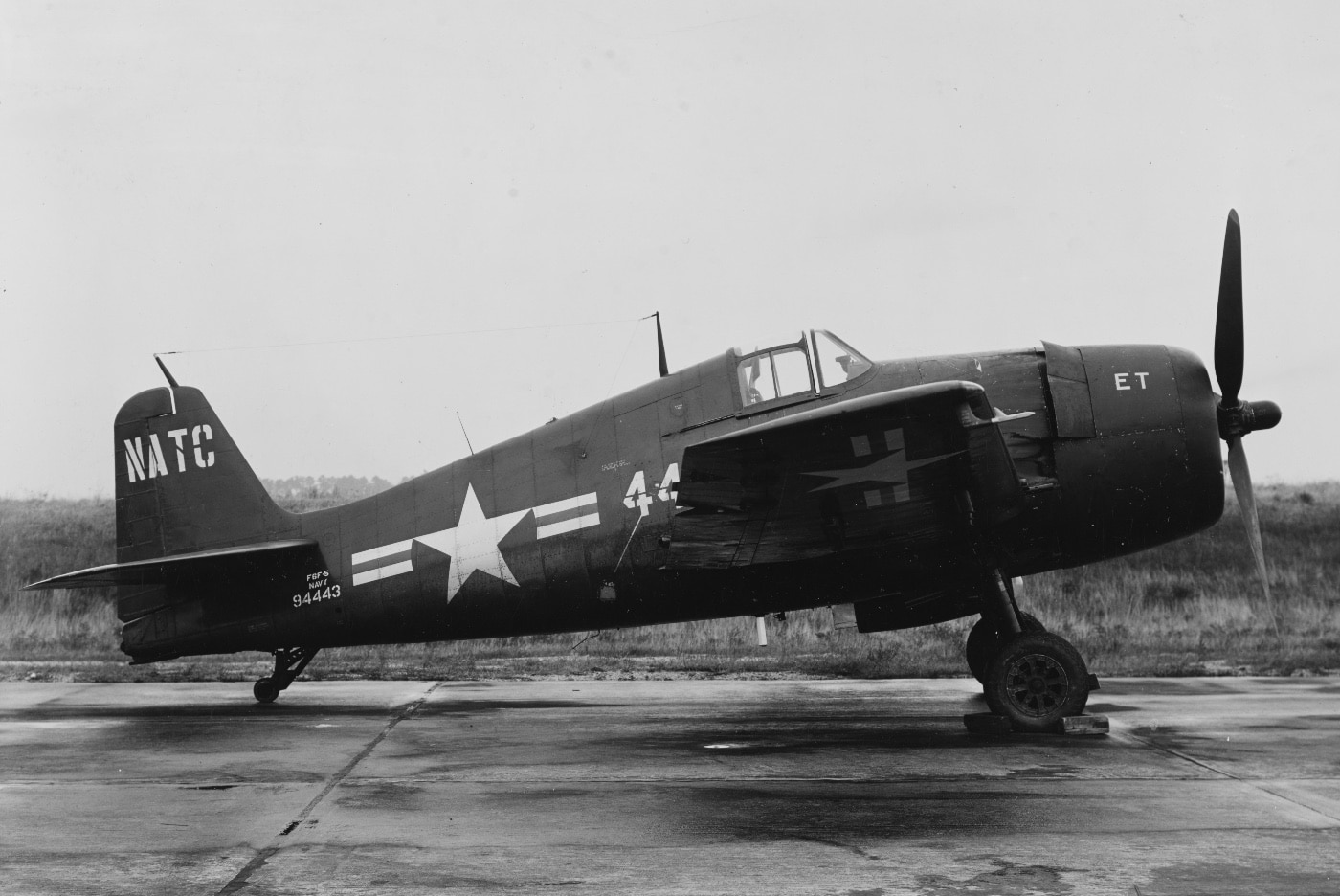
Grumman F6F-5 fighter being used for tests at NAS Patuxent River in December 1949. The “-5” model of F6F incorporated many detail improvements over the early F6F-3. Image: U.S. Navy




